Posted by Elena del Valle on July 25, 2014
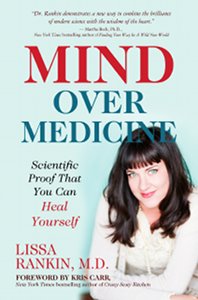
Mind Over Medicine
Photo: LissaRankin.com
Lissa Rankin, MD, a physician and New York Times bestselling author, is convinced that the lessons she learned over years of medical school and clinical practice are not all set in stone. In her 2013 book Mind Over Medicine: Scientific Proof That You Can Heal Yourself (Hay House, $24.95), she shares the process that led her to discover what she believes is a better way to health, and what it might mean to patients.
Your mental attitude, the author says, is the most important factor in your health even ahead of sleep, nutrition, weight, exercise and lifestyle. According to her website, she is “on a grass roots mission to heal health care by repairing the doctor-patient relationship, while empowering both patients and health care providers to marry the best of Western medicine with mind-body approaches scientifically proven to activate the body’s natural self-repair mechanisms.”
In the 259-page hardcover book she says that for more than 50 years the medical establishment has been proving the mind can heal the body. In a candid easy to read style she shares her personal growth path and conclusions.
She wraps up the book with six steps she believes may optimize a body’s natural self-repair mechanisms. She proposes that it is essential to believe you can heal yourself with the support of others. Listening to your body’s signals or what she calls the Inner Pilot Lights is key, she says. If after seeking medical advice you don’t have a diagnosis identify what the source of your problem might be and figure out a way to address it, remembering to be your own healthcare advocate, the author suggests. Realize that the results you obtain may not be those you sough initially, she says.
Rankin is founder of the Whole Health Medicine Institute training program for physicians and other health care providers. When not spreading her message, she likes to hike, paint, and practice yoga.
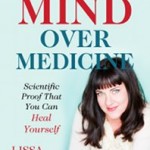
Click to buy Mind Over Medicine
Comments:
Filed Under: Books
Posted by Elena del Valle on July 16, 2014
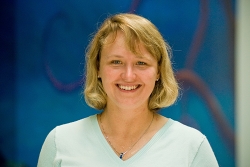
Rebecca H. Johnson, M.D., co-author, Increase in Testicular Germ Cell Tumor Incidence Among Hispanic Adolescents and Young Adults in the United States
Photos: Stephen M. Schwartz, Rebecca H. Johnson, Franklin L. Chien
An article published in Cancer, a a peer-reviewed journal of the American Cancer Society, points to a recent substantial increase in testicular germ cell tumor incidence among Hispanic adolescents and young adults in the United States. The trend was not evident among non-Hispanic whites.
Testicular cancer, among the most common types of cancer in adolescent and young adult men, is said to be one of the most readily treatable. The researchers concluded that heightened awareness is advisable concerning the increasing risk of testicular cancer among Hispanic adolescents and young adults. They recommend additional research to determine the cause of the trend.

Frank Chien, co-author, Increase in Testicular Germ Cell Tumor Incidence Among Hispanic Adolescents and Young Adults in the United States
The article, Increase in Testicular Germ Cell Tumor Incidence Among Hispanic Adolescents and Young Adults in the United States, was authored by Franklin L. Chien, BA, Rebecca H. Johnson, M.D., and Stephen M. Schwartz, Ph.D., MPH.
They found that between 1992 and 2010, the annual incidence of testicular cancer in 15 to 39 year-old Hispanic whites increased 58 percent from 7 cases per 100,000 in 1992 to 11 cases per 100,000 by 2010.
Incidence rates increased in cities for different subtypes of testicular cancer and for all stages of the disease. In the same 19 year interval, testicular germ cell tumor incidence among non Hispanic white young adults increased 7 percent, from 12 to 13 per 100,000. During the 2000 to 2010 period, incidence rates rose in Hispanic whites, but the researchers observed no significant trends in incidence rates among non Hispanic whites.
“Hispanic Americans comprise the fastest growing ethnic group in the United States. Until only recently, cancer incidence data for this population has been too sparse to accurately analyze testicular cancer trends among Hispanic men,” Johnson said in a press release. “The increasing rate of testicular cancer in adolescent and young adult Hispanic males, combined with the rapid expansion of the Hispanic population in the United States, is projected to have a measurable impact on the United States healthcare system.”
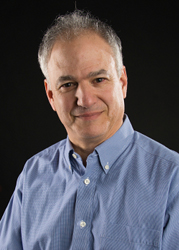
Steve Schwartz, Ph.D., MPH, co-author, Increase in Testicular Germ Cell Tumor Incidence Among Hispanic Adolescents and Young Adults in the United States
“Unfortunately, there’s nothing that Hispanic men can do to minimize their risk, since nothing is known for certain about modifiable risk factors,” said Schwartz by email in response to a question about preventive measures Hispanic men might take.
Johnson noted that, in the past, non Hispanic white men have had the highest rate of testicular cancer of all racial and ethnic groups in the United States. Should the trend found in this study continue, the rate of testicular cancer among Hispanic Americans will outpace that of non Hispanic white men within the next few years.
Posted by Elena del Valle on July 11, 2014
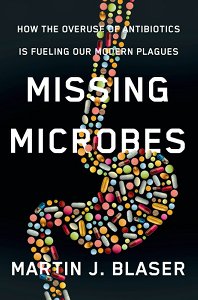
Missing Microbes
Photo: Henry Holt and Company, Troi Santos NYULMC
The health of our body depends in part on the balance the exists between bacterial and human cells. Experts estimate that for hundreds of thousands of years bacterial and human cells have coexisted in a peaceful symbiosis that resulted in the relative health of our bodies, and that we acquire microbes by the time we are three years old. They thrive in our gut, noses, mouth, and skin, and they play an essential role in keeping us healthy. The excessive dependence of modern medicine on antibiotics and Cesarian sections is threatening the equilibrium that allows us to combat diseases by destroying important microbes and making us sick, according to Martin Blaser, M.D., director of the Human Microbiome Project at New York University.
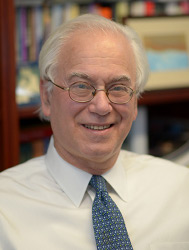
Martin Blaser, M.D., author, Missing Microbes
In Missing Microbes How the Overuse of Antibiotics Is Fueling Our Modern Plagues (Henry Holt, $28), Blaser examines how drugs considered at one point the solution to many health problems may be playing a role in the rise of obesity, asthma, allergies, diabetes, and certain forms of cancer. He believes exposure to antibiotics in early life is among the greatest dangers to our health, pointing out that American children receive on average seventeen courses of antibiotics before the age of twenty. He is concerned that many children are growing without all the microbes they would have had but for the antibiotics they receive.
While he doesn’t propose the elimination of antibiotics or C-sections from the practice of medicine, in the 273-page hardcover book he suggests we examine their use closely. At the same time, he suggests that we search for ways to replace the missing microbes. Blaser, who
has studied the role of bacteria in human disease for over 30 years, founded the Bellevue Literary Review.
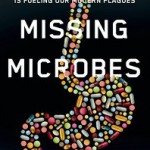
Click to buy Missing Microbes
Comments:
Filed Under: Books
Posted by Elena del Valle on July 7, 2014
Job Title: Communications Coordinator – Bilingual English/Spanish
Company Name: SEIU International
Location: Washington, Dist. Columbia, United States, 20036
SEIU
Communications Coordinator – Bilingual English/Spanish Grade:D
Location: This position may be based in Washington, DC; Los Angeles, CA or NY, NY
* Fluency is Spanish language is required for this position
Click to read the entire ad Communications Coordinator – Bilingual English/Spanish

















